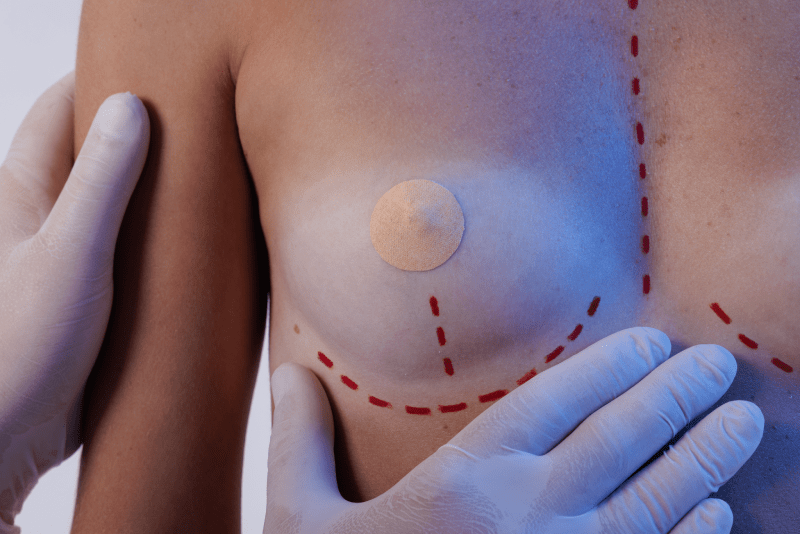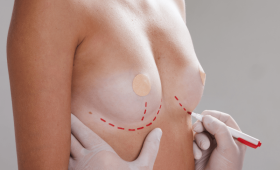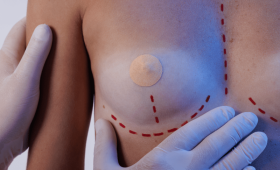Breastfeeding is one of the most special bonds between a mother and a baby. However, for many women, this process is a source of anxiety because it can cause permanent changes to their bodies. Breast sagging is one of the most common aesthetic concerns after breastfeeding. This condition is not only caused by the breastfeeding process itself, but also by factors such as pregnancy, weight fluctuations, and aging. Breasts have a tissue structure that stretches as weight increases and then shrinks. In this article, we will detail 30 different methods you can apply to minimize breast sagging after breastfeeding and protect breast health. These suggestions aim to support not only the aesthetic appearance but also your overall breast health.
Understanding Breast Tissue Anatomy
Breasts are composed of fatty tissue, milk ducts, lobules, and connective tissues (Cooper’s ligaments). Sagging is associated with the loss of elasticity in these Cooper’s ligaments, which stretch and relax, especially during pregnancy and breastfeeding. Understanding the structure and function of these ligaments will help you grasp why the precautions you take work. The skin itself also plays an important role in this process; the better the skin’s elasticity, the more successful the recovery process. Therefore, supporting both the internal structure of the breasts and the external skin simultaneously forms the basis for preventing sagging.
Why Do Breasts Sag?
The main causes of breast sagging include genetic predisposition, hormonal changes during pregnancy and breastfeeding, the expansion and contraction of the breast, aging, and gravity. Especially during pregnancy, breasts grow in preparation for milk production, and their weight increases. After breastfeeding ends, the breasts return to their original size, but the skin and connective tissue may not keep up with this rapid change, losing their elasticity and causing sagging.
Choosing the Right Bra
Choosing the right bra throughout pregnancy and the breastfeeding period provides the support your breasts need. It’s important to use bras with different features for day and night. It is important to avoid underwire bras to prevent compressing the milk ducts. Bras made of cotton, breathable, and flexible fabrics should be preferred. Make sure the bra straps apply equal pressure to the shoulders and that the cup size fits perfectly.
Wearing a Bra at Night
During pregnancy and breastfeeding, especially when the breasts are full, wearing a bra while sleeping provides extra support to the breast tissue, reducing the effect of gravity. Night bras are designed to offer maximum comfort and support during sleep. These bras are usually made of seamless and soft materials. This simple habit can significantly reduce the amount of stretching in your breasts in the long run.
Weight Control
Sudden weight fluctuations are one of the most important factors causing breast sagging. It is important to lose the weight gained during pregnancy slowly and in a controlled manner after breastfeeding. Rapid weight loss causes the fat in the breast tissue to melt away quickly, and the skin may not be able to recover. Losing weight healthily through a balanced diet and regular exercise is also very beneficial for breast health.
Proper Nutrition and Hydration
Drinking enough water is vital to maintain skin elasticity. Dehydrated skin loses its flexibility and sags more easily. At the same time, eating foods containing vitamin C, vitamin E, zinc, and collagen increases the skin’s ability to regenerate. Adding foods like leafy greens, salmon, avocado, nuts, and seeds to your diet helps keep your skin healthy.
Chest Muscle Exercises
Breasts themselves do not contain muscle tissue, but strengthening the pectoral muscles underneath provides a natural support for the breasts. Exercises like push-ups, bench presses, and dumbbell flies tighten your chest muscles, helping your breasts stand more upright. Doing these exercises regularly improves your posture and supports your breasts.
Posture Correction
Poor posture is another factor that contributes to breast sagging. Standing up straight helps keep your breasts up by engaging your back and shoulder muscles. When sitting and standing, be careful to keep your shoulders back and your back straight. Exercises like yoga and pilates are great for correcting your posture.
Breast Massage
Breast massage increases blood circulation and supports collagen production in the skin. Gently massage in circular motions using moisturizing lotions or natural oils (e.g., almond oil or olive oil). This helps the skin maintain its elasticity and stay moisturized. Applying this massage regularly is beneficial for the health of your breast tissue.
Cold Water Shower
After a hot shower, applying cold water to your breasts stimulates blood circulation and tightens the skin. This simple process can increase the elasticity of the tissue in the breasts. Directing cold water to your breasts for the last few seconds of your shower will create an instant tightening sensation on your skin and provide long-term benefits.
Slow and Controlled Weaning
Instead of suddenly stopping breastfeeding, ending the process slowly allows your breasts to shrink in a controlled manner. This allows the breast tissue and skin to gradually recover. To slow down milk production, you can spread the weaning process by reducing one breastfeeding session each day.
Breastfeeding Position
The correct breastfeeding position reduces the load on the breast and prevents the breast tissue from stretching unnecessarily. Make sure your baby’s mouth and nose are parallel to the breast and that they have a full latch on the nipple. It is also important to properly support your baby’s head and neck.
Skincare Products
Skin-firming creams, lotions, and oils can help the skin on your breasts stay moisturized and maintain its elasticity. Using these products regularly provides the care your skin needs. Opt for products that contain collagen and elasticity-boosting ingredients and apply them with a massage.
Sun Protection
The sun’s harmful UV rays accelerate skin aging and damage collagen and elastin fibers. This makes the skin more prone to sagging. Use high-SPF sunscreen or choose to wear clothes that cover your breasts to protect them from the sun. This is important for both breast health and your overall skin health.
Homemade Masks
Homemade masks prepared with natural ingredients can nourish and tighten your skin. Masks made of ingredients like clay, aloe vera, egg white, or honey can help the skin look firmer. You can apply these masks once or twice a week.
Sufficient Sleep
Sufficient and quality sleep is vital for the body to renew and repair itself. During sleep, skin cells regenerate and collagen production increases. Sleep can be difficult during the breastfeeding period, but trying to rest as much as possible is very beneficial for both your physical and mental health.

Firming Botanical Oils
Natural oils such as almond oil, olive oil, argan oil, and jojoba oil deeply moisturize the skin and increase its elasticity. Regularly massaging these oils into your breasts can help your skin look smoother and firmer. These oils strengthen the skin’s moisture barrier and prevent dryness.
Balanced Fluid Intake
In addition to water, healthy beverages like green tea and freshly squeezed fruit juices also contribute to skin health. Antioxidant-rich drinks prevent cell damage caused by free radicals, slowing down skin aging. Avoiding sugary drinks and alcohol is important for skin health.
The Right Bra During Exercise
When doing high-impact exercises like running, jumping, or weightlifting, it is very important to use a sports bra specially designed for your breasts. Sports bras minimize breast movement and prevent the stretching of connective tissues. High-support bras are an investment in your breast health.
Reducing Smoking and Alcohol Consumption
Smoking and excessive alcohol consumption are factors that reduce skin elasticity and damage collagen fibers. Smoking restricts blood circulation, preventing oxygen and nutrients from being delivered to the skin. This leads to premature skin aging and sagging. Quitting or reducing these habits is also important for overall health.
Yoga and Pilates
Yoga and pilates are great exercises for correcting your posture and strengthening your back muscles. These exercises stretch and strengthen the muscles around the rib cage, which helps the breasts stand more upright. Specifically, poses like the “Cobra pose” and “Bridge pose” target the chest muscles.
Vitamin C Intake
Vitamin C is a critical vitamin for collagen production. Consuming foods rich in vitamin C such as oranges, kiwis, strawberries, and broccoli helps your skin stay healthy and elastic. Vitamin C also has antioxidant properties and protects the skin from environmental damage.
Avoiding Excessive Physical Activity
Although exercise is important, it may be beneficial to avoid high-impact activities that cause your breasts to shake or bounce excessively. If you do engage in such activities, be sure to use a high-support sports bra. Sports like basketball or volleyball are also among those that require caution.
Family History and Genetics
Genetics have a significant effect on breast sagging. If there is a history of breast sagging in your family, you should be aware that this condition is more likely for you. This does not mean you cannot prevent sagging altogether, but it does indicate that you should pay more attention to the precautions mentioned above, accepting this fact.
Not Limiting the Number of Breastfeeding Sessions
How often you breastfeed your baby does not have a direct effect on breast sagging. The main factors are the size and weight of the breasts themselves, not the breastfeeding process. Therefore, breastfeed your baby as much as they need and do not restrict yourself in this regard.
Gradual Breast Growth
To prevent your breasts from growing too quickly during pregnancy, keep your weight gain under control with regular exercise and a healthy diet. This allows the breast tissue and skin to expand more slowly and in a controlled manner.
Professional Massage and Care
A professional massage can increase blood circulation and support the health of breast tissue. This relaxes the muscles and makes the skin look more vibrant. Special firming treatments at professional care centers can also support this process.
Skin Rejuvenation Treatments
To improve the appearance of your skin after breastfeeding, you can consider professional skin rejuvenation treatments such as laser therapy or radiofrequency. These treatments stimulate collagen production, making the skin look firmer. You can evaluate these options by consulting a dermatologist.
Approaching Your Body with Compassion
Pregnancy and breastfeeding are natural processes that change your body in incredible ways. It is very important to accept these changes and be kind to yourself. Breast sagging is a normal condition and is seen in many women. By taking good care of your body and accepting it with love, you can get through this process more easily.
Seeking Expert Opinion
If you have serious concerns about breast sagging or cannot get the results you want despite all these methods, do not hesitate to seek expert advice from a plastic surgeon or dermatologist. These experts can evaluate the most suitable treatment options for you (e.g., a breast lift surgery) and guide you.
This guide provides a comprehensive roadmap for you to protect your breast health and minimize breast sagging after breastfeeding. Remember that every body is different and results may vary from person to person.



